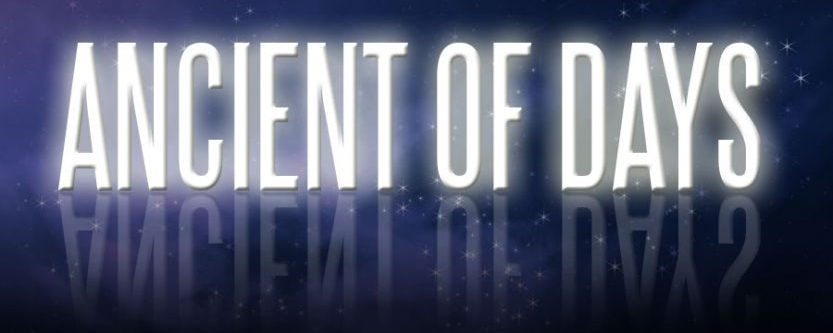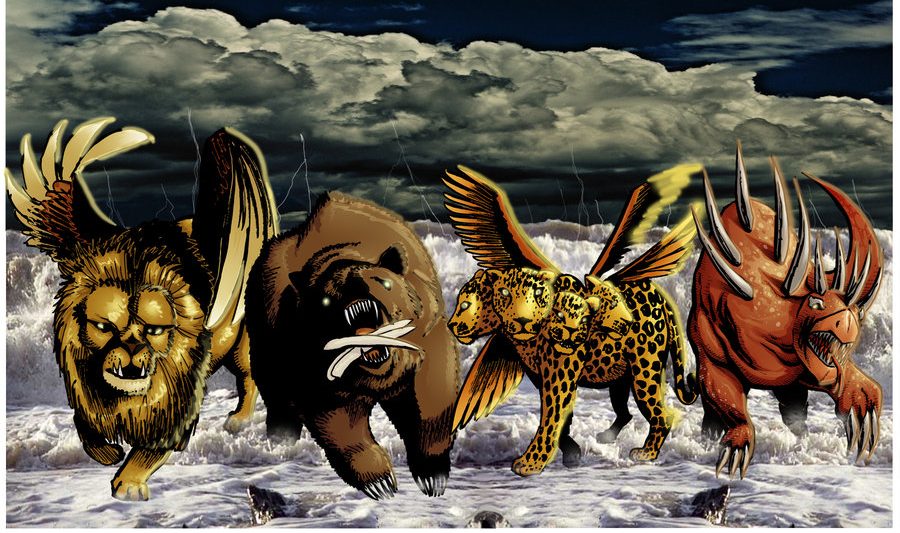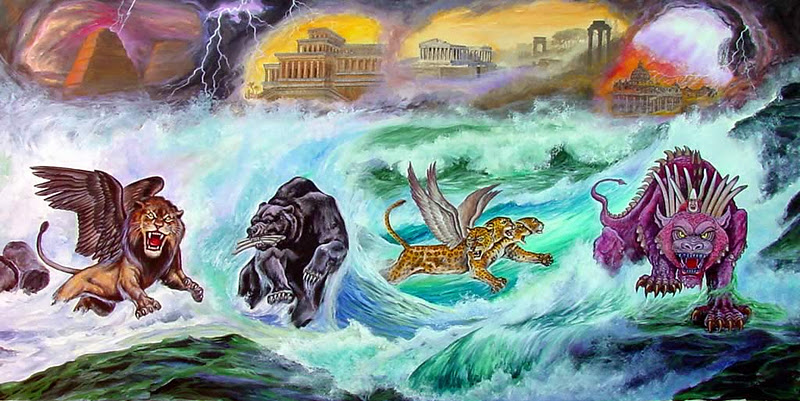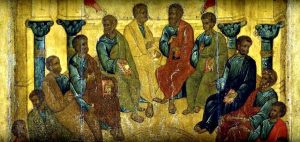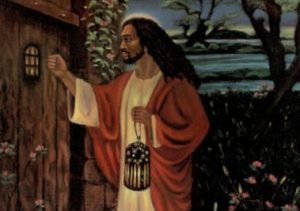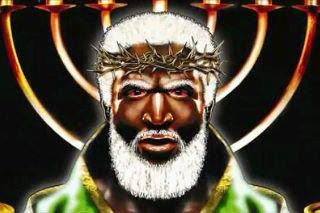
1. The Question: Who is the Ancient of Days?
What is the common view or who do people say, “The Ancient of Days” is?
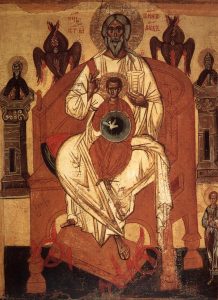
Now it is generally understood that the Ancient of Days, as He appears in the Holy Bible, in the Book of Daniel the Prophet Chapter 7 at verses: 9, 13, 22, refers to God or Yah the father. However although originally interpreted and understood as such by, the Hebrew Jewish people, to be Yah the Father, since the advent of Yahshuah and the New Testament, which the Jewish people reject, this figure; “The Ancient of Days”, has also become a key figure within the Christian faith.
Although also accepted to be Yah the Father, in Christianity, “The Ancient of Days” also represents and is a symbol of Yahshuah and Yah the Father simultaneously. This particular figure and these unique verses are interpreted by most Christians, to be Christ, fulfilling the Prophesy of Daniel, signalled by either his Incarnation or His Second Coming or both.
It is generally therefore held and understood that The Ancient of Days, is and remains YHWH the Father, exclusively in the ancient and modern Jewish Faith, but within Christianity he is interpreted to be either YAH the Father and/or Yahshuah, simultaneously (Within the Trinity).
2. The Purpose: Aims & Object of this page
Learn exactly why we have created this page and what we aim to achieve.
The Aim, Objective & Purpose
The object of this page is therefore to present, as well as analyse this phrase, “The Ancient of Days”, as it features and appears within the Holy Scriptures. Due to the fact that this terminology is only found in the Book of Daniel, in chapter seven and in only three separate verses, this is therefore made easy. As the chapter itself indicates and states that the vision is a complete, stand alone narrative, this can therefore be achieved by simply accessing the whole chapter to see exactly how, why, when and in what context the term is used.
This will be achieved by:
1. Reading: Presenting Chapter Seven
2. Analysing: Chapter 7, the setting, structure and content
3. Presenting: A literal summary and interpretation of the Chapter
4. Identifying: Some Key Facts, some direct Bible parallels and current views .
Chapter Seven in the context of the entire Book of Daniel
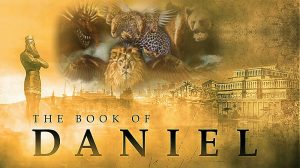 Now although the chapter is a complete narrative in itself, this however does not mean that the full understanding of the chapter can be understood within itself. The chapter features as part of a collection of visions and dreams that feature throughout the Book of Daniel, from start to finish. Many of these visions found throughout this book have direct parallels to each other and in particular chapter seven itself. Therefore chapter seven can only be fully understood with a concise understanding of all the visions in the Book of Daniel, those that come before and after, many of which offer us more details to the vision, not presented within chapter seven.
Now although the chapter is a complete narrative in itself, this however does not mean that the full understanding of the chapter can be understood within itself. The chapter features as part of a collection of visions and dreams that feature throughout the Book of Daniel, from start to finish. Many of these visions found throughout this book have direct parallels to each other and in particular chapter seven itself. Therefore chapter seven can only be fully understood with a concise understanding of all the visions in the Book of Daniel, those that come before and after, many of which offer us more details to the vision, not presented within chapter seven.
Chapter Seven in the context of the Entire Holy Bible.
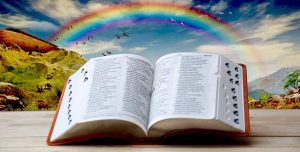 As well as having parallels with other chapters and visions in the Book of Daniel, as a prophetic book and as a vision of the future, this particular vision and others in the Book of Daniel, are paralleled and have a direct connection, influence and offers an insight to, many other prophesies and visions found through many books of the Holy Bible, including all the prophets of the Old Testament, both those who came before and after Daniel. As well as within the New testament books in addition to the book of Revelation that features possibly more parallels than any other Bible Book, with the Book of Daniel.
As well as having parallels with other chapters and visions in the Book of Daniel, as a prophetic book and as a vision of the future, this particular vision and others in the Book of Daniel, are paralleled and have a direct connection, influence and offers an insight to, many other prophesies and visions found through many books of the Holy Bible, including all the prophets of the Old Testament, both those who came before and after Daniel. As well as within the New testament books in addition to the book of Revelation that features possibly more parallels than any other Bible Book, with the Book of Daniel.
Therefore the full understanding of Chapter 7 of the Book of Daniel, the Ancient of Days or any other vision contained within the Book, or any other book of the Holy Bible, for that matter, can only be fully understood, with a concise knowledge and understanding of all the prophesies found within the Bible, as all are intrinsically linked, to one another.
We don’t attempt here therefore to present any meaning or interpretation of the chapter in its full context, but to simply analyse the facts, as they are contained and presented specifically in this particular chapter.
3. Read The Book of Daniel: Chapter 7
Read the entire Chapter 7 of the Book of Daniel, to learn about his vision“The Ancient of Days”.
Daniel’s Vision of the Four Beasts
Dan 7:1
In the first year of Belshazzar king of Babylon Daniel had a dream and visions of his head upon his bed: then he wrote the dream, and told the sum of the matters.
Dan 7:2
Daniel spake and said, I saw in my vision by night, and, behold, the four winds of the heaven strove upon the great sea.
Dan 7:3
And four great beasts came up from the sea, diverse one from another.
Dan 7:4
The first was like a lion, and had eagle’s wings: I beheld till the wings thereof were plucked, and it was lifted up from the earth, and made stand upon the feet as a man, and a man’s heart was given to it.
Dan 7:5
And behold another beast, a second, like to a bear, and it raised up itself on one side, and it had three ribs in the mouth of it between the teeth of it: and they said thus unto it, Arise, devour much flesh.
Dan 7:6
After this I beheld, and lo another, like a leopard, which had upon the back of it four wings of a fowl; the beast had also four heads; and dominion was given to it.
Dan 7:7
After this I saw in the night visions, and behold a fourth beast, dreadful and terrible, and strong exceedingly; and it had great iron teeth: it devoured and brake in pieces, and stamped the residue with the feet of it: and it was diverse from all the beasts that were before it; and it had ten horns.
Dan 7:8
I considered the horns, and, behold, there came up among them another little horn, before whom there were three of the first horns plucked up by the roots: and, behold, in this horn were eyes like the eyes of man, and a mouth speaking great things.
Dan 7:9
I beheld till the thrones were cast down, and the Ancient of days did sit, whose garment was white as snow, and the hair of his head like the pure wool: his throne was like the fiery flame, and his wheels as burning fire.
Dan 7:10
A fiery stream issued and came forth from before him: thousand thousands ministered unto him, and ten thousand times ten thousand stood before him: the judgement was set, and the books were opened.
Dan 7:11
I beheld then because of the voice of the great words which the horn spake: I beheld even till the beast was slain, and his body destroyed, and given to the burning flame.
Dan 7:12
As concerning the rest of the beasts, they had their dominion taken away: yet their lives were prolonged for a season and time.
Dan 7:13
I saw in the night visions, and, behold, one like the Son of man came with the clouds of heaven, and came to the Ancient of days, and they brought him near before him.
Dan 7:14
And there was given him dominion, and glory, and a kingdom, that all people, nations, and languages, should serve him: his dominion is an everlasting dominion, which shall not pass away, and his kingdom that which shall not be destroyed.
Dan 7:15
I Daniel was grieved in my spirit in the midst of my body, and the visions of my head troubled me.
Dan 7:16
I came near unto one of them that stood by, and asked him the truth of all this. So he told me, and made me know the interpretation of the things.
Dan 7:17
These great beasts, which are four, are four kings, which shall arise out of the earth.
Dan 7:18
But the saints of the most High shall take the kingdom, and possess the kingdom for ever, even for ever and ever.
Dan 7:19
Then I would know the truth of the fourth beast, which was diverse from all the others, exceeding dreadful, whose teeth were of iron, and his nails of brass; which devoured, brake in pieces, and stamped the residue with his feet;
Dan 7:20
And of the ten horns that were in his head, and of the other which came up, and before whom three fell; even of that horn that had eyes, and a mouth that spake very great things, whose look was more stout than his fellows.
Dan 7:21
I beheld, and the same horn made war with the saints, and prevailed against them;
Dan 7:22
Until the Ancient of days came, and judgement was given to the saints of the most High; and the time came that the saints possessed the kingdom.
Dan 7:23
Thus he said, The fourth beast shall be the fourth kingdom upon earth, which shall be diverse from all kingdoms, and shall devour the whole earth, and shall tread it down, and break it in pieces.
Dan 7:24
And the ten horns out of this kingdom are ten kings that shall arise: and another shall rise after them; and he shall be diverse from the first, and he shall subdue three kings.
Dan 7:25
And he shall speak great words against the most High, and shall wear out the saints of the most High, and think to change times and laws: and they shall be given into his hand until a time and times and the dividing of time.
Dan 7:26
But the judgment shall sit, and they shall take away his dominion, to consume and to destroy it unto the end.
Dan 7:27
And the kingdom and dominion, and the greatness of the kingdom under the whole heaven, shall be given to the people of the saints of the most High, whose kingdom is an everlasting kingdom, and all dominions shall serve and obey him.
Dan 7:28
Hitherto is the end of the matter. As for me Daniel, my cogitations much troubled me, and my countenance changed in me: but I kept the matter in my heart.
4. The Setting & Scene: Analysing Chapter 7
What is the Book of Daniel about and how does “The Ancient of Days” feature.
The Analysis
First of all it should be noted that chapter 7 of the book of Daniel is a complete narrative, in the sense that it first presents, then gives the interpretation and the summary and conclusion of the chapter.
This is presented in stages which include;
1. When and how the vision occurred; Verses 1
2. The Dream & Vision of the Four Beast; Verses 2-3
3. The Description of the Four Beasts; Verses 4-8
4. The appearance and reign of The Ancient of Days; Verses 9-10
5. The failure of the Horn that arises from 10 Horns and end of the Fourth Beast; Verses 11-12
6. The appearance of the One Like the Son of Man; Verses 13-14
7. The Interpretation of the whole vision; Verses 15-28 (end)
It is through these stages that Daniel relays his full vision. In analysing the chapter and also The Ancient of Days, specifically, it is also important to know exactly, when the phrase appears in the chapter.
The 3 verses where it is mentioned are;
1. Dan 7:9 I beheld till the thrones were cast down, and the Ancient of days did sit, whose garment was white as snow, and the hair of his head like the pure wool: his throne was like the fiery flame, and his wheels as burning fire.
2. Dan 7:13 I saw in the night visions, and, behold, one like the Son of man came with the clouds of heaven, and came to the Ancient of days, and they brought him near before him.
3. Dan 7:22 Until the Ancient of days came, and judgement was given to the saints of the most High; and the time came that the saints possessed the kingdom.
Now that we know the structure of the chapter, we can now analyse the narrative of the vision as it is presented through this structure and in its context and setting. This can be achieved by analysing each of the themes and stages listed above.
5. Literal Summary: Daniel Chapter 7
A literal summary of the Book of Daniel chapter seven, its content and context.
A literal translation of Chapter 7 through its stages;
1. When and how the vision occurred; Verses 1
Daniel has his vision in the 1st year of the reign of Belshazzar king of Babylon. He was asleep in his bed, when this vision took over his dream. He awoke and wrote down this Vision.
2. The Dream & Vision of the Four Beast; Verses 2-3
Daniel speaks and explains what he saw. He visions the four winds of Heaven upon a great sea, when he saw four different beasts arise out of the sea.
3. The Description of the Four Beasts; Verses 4-8
Daniel describes the four beasts separately beginning with;
– The 1st Beast: Was Like a Lion, with eagle wings that were plucked and the Lion was lifted up from the earth, to stand upon feet as a man, it was also given a man’s heart. (7:4)
– The 2nd Beast: Was Like a Bear, it raised up itself on one side and had three ribs in its mouth, gripped in its teeth and it was told to devour much flesh. (7:5)
– The 3rd Beast: Was Like a Leopard, with four heads and with four wings of a fowl on its back, this beast was given dominion. (7:6)
– The 4th Beast: Was different from the first three beast, as it was more dreadful and terrible and much stronger. It had great iron teeth that devoured, broke in pieces and trampled under its feet any contesters. This 4th beast had 10 Horns. (7:7)
– The Little Horn: Daniel was considering what the 10 horns of the 4th Beast were, when he saw that one of these horns, rose up amongst the 10 horns and plucked up the roots of three of the original 10 horns. This little horn had eyes like the eyes of man and a mouth that spoke great things. (7:8)
4. The appearance of The Ancient of Days; Verses 9-10
Daniel then sees Thrones cast down and The Ancient of Days sitting on a Throne that was like a fiery flame and wheels as burning fire. He describes “The Ancient of Days” having hair like pure wool and dress in all white. Daniel records that he also saw a a fiery stream coming from “The Ancient of Days” as well as great multitude ministering and standing before him. He tells us that the Judgement was then set and The Books were opened.
5. The little Horn arising & the end of the Fourth Beast; Verses 11-12
Daniel informs us that he beheld in his vision, due to voice of the little horn that spoke great words that this little horn would eventually be slain (defeated and killed) and his body be destroyed by burning. Meanwhile Daniel informs us that the rest of the beast, meaning the remaining horns of the 4th Beast, had their dominion taken away from them. However this was not immediate and they are given a specific time to continue living, after the Little horn is destroyed, before they like the little horn, meet their ultimate fate and destruction.
6. Appearance of the One Like the Son of Man; Verses 13-14
Daniel then sees in his vision the appearance of “One Like the Son of Man”, who came in the Clouds of Heaven and was brought before “The Ancient of Days,” Although it is not exactly clear, it is assumed here that “The One Like the Son of Man”, is then given dominion, glory and a specific kingdom, by “The Ancient of Days,” so that all people, nations, tribes should serve him and therefore follow “The Ancient of Days,” . The One Like the Son of Man dominion is everlasting and his Kingdom shall never be destroyed.
7. The Interpretation of the vision; Verses 15-28 (end)
– Who revealed the vision: Whilst still in his vision Daniel then began to be saddened, as the vision was troubling his spirit and his body. He therefore approach one of the beings who were present in his vision, to enquire what his vision meant. He was then told and given the fully interpretation of the vision, by this being. (15-16)
– He starts with a summary: Daniel first summarises what he is told, which is that the Four Beast that are Four Kings and there respective kingdoms shall arise in the earth. He then informs us of the presence of “The Saints of the Most High” and tells us that they will eventually Take the Kingdom and Posses the Kingdom forever. (17-18)
– He then tells his vision: Then Daniel relays the truth of what he is told about the fourth beast, who was different from the three beast that it followed and was exceedingly dreadful, with teeth of iron, nails of brass and who trampled everything under its feet. (19)
– The 10 Horns & little horn: Daniel explains that the Ten Horns on his head and the little horn that came up, after whom 3 of the 10 horns fell. This was the little horn that had eyes, a mouth and spoke great things. This little horn also seemed prouder than his fellow horns. This little horn in his pride, makes war against “The Saints of the Most High” (see verse 18) and prevails against them. (20-21)
– The Saints are saved: But then Daniel informs us that after the little horn, prevails against “The Saints of the Most High”, “The Ancient of Days” steps in and His judgement was given in favour of saints over the little horn and the Kingdom was given to “The Saints of the Most High” to possess. (22)
– Further explanation about the Fourth Beast: Daniel then offers further insight into fourth and final beast. He tells us that this beast will not only be different but will devour and dominate the whole earth. This domination by the fourth beast, over the entire world, is accompanied, assisted and supported by its 10 horns, meaning the 10 kings and kingdoms that emerged out of it, until the little horns arises and subdues 3 of the other 10 horns. (23-24)
– Further explanation about the little horn: Daniel goes on to give us more detail about the little horn and his activities, by telling us that the little horn speaks great words against the Most High and he shall ware out “The Saints of the Most High” he shall even try or have the intention to change times and laws. The “The Saints of the Most High” are given into the hands of the little horn for a time and times and the dividing of time, commonly interpreted as three and a half years (25)
– The End of Fourth Beast and all its horns: Then Daniel gives us the outcome and conclusion of the the activities of the fourth beast, its 10 horns and finally the little horn. He tells us that the Judgement shall come and this fourth beast and its issue shall be totally consumed and then come their their end (26)
– The Saints of the Most High prevail: Daniel then explains exactly why and how the fourth beast, 10 horns and little horns are defeated. He tells us that the dominion over the whole earth that the four beats had, was taken away from them and given to “The Saints of the Most High.” Who establish an Everlasting Kingdom under the Heavens that all dominions of earth must obey and follow. (27)
– Daniel Ends this Vision: Daniel then ends his narrative and this record of his vision, stating that although still being troubled by what he had seen, which had changed him, he nevertheless kept the matter close to his heart. (28)
6. The Characters: In Daniel Chapter 7
Who are the the main characters in the Book of Daniel chapter 7 and can they be identified in history.
The Four Beasts, The Fourth Beast, its 10 Horns & little horn.
The Vision of Daniel in chapter seven, has direct parallels to his vision in chapter two. Both visions seem to speak of the exact same themes in future history, where four kingdoms or four beast, with 10 toes or 10 horns, represents the empire that would dominate the world, until the end of a specific time and age.
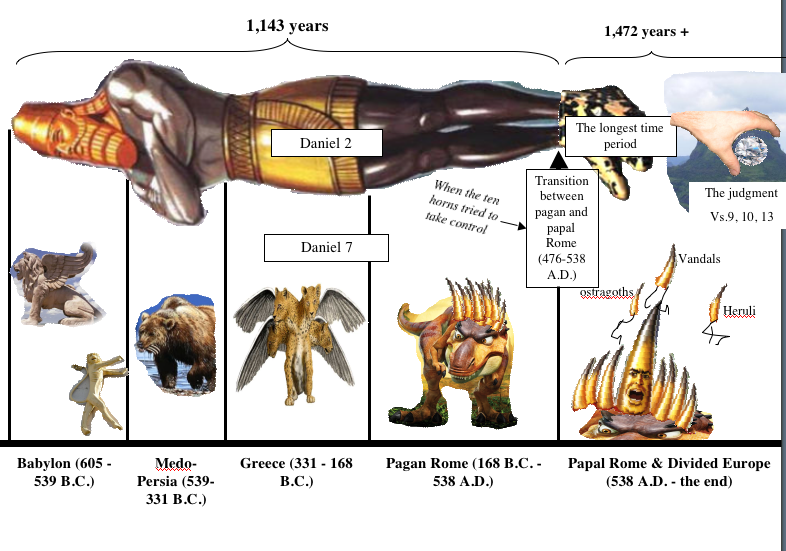
The Illustration
The image above gives one such example, of how both of these visions coincide. The illustration also provides the actual kingdoms that these beast and kingdoms represent, in addition to when they emerged in history, as well as, how long they continued to be a world force. From this image and illustration, we see that the first Beast is Babylon, the second Persia, the Third Greece and the Fourth Rome, from whom the ten horns and the little horn, sprang. (approximate dates)
Other Characters
In addition to the Ancient of Days, the Four Beasts, the ten horns and the little horn, other characters or people of great importance in the chapter are “The Saints of the Most High.” and the “One Like the Son of Man”, who play an intrinsic part and role within the process and outcome of the vision, in particular defeating the Fourth and final beast.
Who are the Ten Horns
Now as this particular vision and prophesy of Daniel’s, can be verified historically, meaning although, not mentioned by name, each of the Four Beast, can be and are clearly identified within the historical record. This includes the emergence and dominance on world affairs, by Babylon, Persia, Greece & Rome, respectively. Likewise the rise of 10 kingdoms, after the collapse of the Roman empire, can also be historically verified. With some variations these 10 kingdoms and horns, are commonly represented as;
THE TEN HORNS OF ROME
Horn
i
ii
iii
iv
v
vi
vii
viii
ix
x
Kingdom
Italy (Rome & Vatican)
France (Gaul)
Britain (Anglo Saxons)
Germany (Franks)
Belgium
Dutch (Netherlands etc)
Spain
Portugal
Prussia (Austria, Poland etc,)
Greece (Byzantine – Turkey)
Date
After 476 AD
After 476 AD
After 476 AD
After 476 AD
After 476 AD
After 476 AD
After 476 AD
After 476 AD
After 476 AD
After 476 AD
The existence of the 10 Horns in modern times:
As already mentioned these kingdoms highlighted in the table above are often credited to be the Ten Kingdoms and Horns that emerged after the Rome Empire collapsed. However few of the original territories of these kingdoms, remain today and over the centuries have changed remarkably, many breaking up into smaller nations and kingdoms. Nevertheless all these European kingdoms mentioned above, are the modern custodians and inheritors of the collapsed Roman Empire in 476 AD, therefore represent the 10 Horns or 10 Toes of Rome.
7. The Key Facts: In Daniel Chapter 7
What are the Key Facts within the Book of Daniel concerning The Ancient of Days.
What are the Key Facts
1. Location: Daniel saw this vision in a dream, whilst in Babylon.
2. Date: Daniel’s Vision happened around the year 540 BC, in the time of Belshazzar king of Babylon
3. Theme: Daniel’s vision concerns his present times and future world events.
4. Details: Daniel see’s four kingdoms and world powers, who he calls beasts, rise from the sea. These beast include as mentioned; Babylon the Lion, the then world power and the three worlds powers that would follow them, namely; Persia the Bear, Greece the Leopard and Rome the 10 Horned beast.
5. Symbolic: Each of these beast have specific characteristics, in particular, they are animals, but with some human features, they also have wings, teeth and horns. These features are symbolic to the nature of the beast and represents characteristics, to possibly help us identify the kingdoms.
6. Attention & Importance: Although each beast has a role in the narrative, the first three, ie. Babylon, Persia & Greece are given very little attention, since there dominance and existence as world powers was short lived, all less than 300 years each. The combined duration of the first 3 beast is from Babylon around 605 BC to 168 BC, after Greek the empire fell to Rome, a period of almost 800 years combined. This gives us the year 168 BC for the rising of the Fourth Beast, Rome.
7. The Fourth Beast: Daniel places much attention on the Fourth Beast, Rome, with its ten horns and more importantly and specifically the little horn that rises out of this beast. This Fourth Beast, continues for a short while as a world power, before it itself demises as a global empire.
8. The Ten Horns: However unlike its predecessors, the Fourth Beast, Rome is not totally destroyed, but continues to live on through the 10 horns that arise out of it, after its empire collapses. The fall of the Roman Empire is dated to have happened around the end of the 5th century AD or the early part of the 6th century, dates commonly given range from 476 AD – 540 AD. Therefore we can assume that the 10 horns, who are the 10 kingdoms that emerged after the fall of the Rome empire, arose around 540 AD. This would mean that these 10 horns rose approximately 1000 years, after Daniel’s vision in 540 BC, rising therefore from about 476 AD to the latest 540 AD.
9. The reign of the Ten Horns: According to Daniel, these 10 horns of Rome, continue to survive throughout the ages, in fact until a specific age or end of age. Therefore it can be assumed that from 168 BC to 540 AD Rome as an empire had dominance over the earth, like no empire that had come before it, for a duration of about 700 years. Thereafter this dominance was assumed by Ten Horns, from at least 540 AD to present.
10. The Survival of the 10 Horn: Daniel tells us that these 10 horns will continue to exist as nations, until one of these horns, rises up, as a little horn, subdues three, leaving 7 including itself. This little horn rises up at a latter time, from when these horns, originally emerge. The time when this little horn arose, is very significant, as it comes at a time when it is said that the 10 horns, have dominion and power, over the whole earth.
11. The Kingdoms of the 10 Horns: The fact that the little horn arose at a time when the 10 horns are dominating the world, either deviates from the historical records or determines exactly when in the future, this little horn, actual rises. This deviation from historical facts, would be due to the fact that if the 10 horns that emerged from Rome, continue to exist from then on and have world domination until the little horn rises, this could not be verified or substantiated historically.
12. The History of the 10 Horns: The historical record shows that all of the nations and kingdoms that emerged in Europe, after Rome’s fall in 476 or 540 AD, immediately fell into what is known to history as the Dark Ages, or Medieval Times that lasted in Europe for at least 1000 years. During this period of 1000 years, none of these kingdoms had any world, or global influence whatsoever, but were fighting amongst themselves. With Europe only emerging from the Dark Ages, as late as the mid 15th Century.
13. The Rebirth of the 10 Horns: Now if we follow what Daniel insinuates that the little horn, will arise after the 10 horns have power and dominion, over the whole world. Historically this could not have been any time during the 1000 years of the dark-ages and must proceed this time. It should also be noted that just under a century after the fall of Rome, saw the rise of Arab Muslim religion & culture. The Muslims dominated world affairs, including important parts of the old Roman empire, particularly in Europe, such as Greece, Spain & Portugal from 7th century AD to 1450.
14. How The 10 Horns regain world domination? Following the historical record, we find that the beginning of the new rise to power and global domination of the 10 kingdoms and horns of Rome. Who were held back and subdued by Muslim forces for a 1000 years, ended specifically with the conquest of Grenada Spain in 1450 and the Signing of the Grenada Treaty of 1492, between the new European Spain ruler and the Vatican of Rome. This Muslim defeat and European Treaty, together with their corresponding dates, are very significant in understanding how the 10 Horns of Rome, re-emerged to become world power and have world dominion, in our modern times.
15. When The 10 Horns of Rome emerges? Based upon the fact that the little horn arises at a time when the 10 Horns and Kingdoms of Rome, have total dominion and power over the world, indicates first that this age and time period, historically must proceed the dark-ages and more specifically after 1492. It can also be seen that even after 1492, these 10 kingdoms of Rome, historically, still did not assume world domination, for some time.
16. When the 10 Horns resume world domination? In fact the world domination of European nations and therefore the 10 horns and kingdoms of Rome, has only been a historical reality, in our very modern age, specifically after the Abolition of the Slave Trade in the 1800’s and European Colonialism 1892-1914, the Berlin Conference and towards the end WWI.
17. The little horn rises: On the bases of the status of the 10 horns of Rome on world affairs, it can be fair to say that the little horn must rise after 1800 AD and more specifically after 1914, by which time the 10 horns had assume back power and dominion, over the world, as the vision indicates, not experienced since the fall of Rome. Therefore the little horn, must come after this time, he may have already come, or is still yet to surface.
18. Identifying the little horn in the age; There are many clues to help us identify the little horn and when he is expected to rise, as there are other aspects of the vision that offer us more details to his rising, his purpose and his agenda. For example we are told that simultaneously to the rising of the little horn on earth that events are also taking place in heaven, with thrones being cast down and the appearance of “The Ancient of Days”, sitting on his throne. This little horn is also explicitly connected to “The Saints of the Most High” too, as he not only makes wars against them, but is able to prevail over them for a time. Also of importance to identifying the risen little horn, is that he is most certainly one of the original 10 horns and he subdues 3 of the original 10, when he rises up.
19. The Fall of the little horn, the 7 horns and the fourth beast: On all accounts the appearance of the little horn is perceived as an end time prophesy, by both Jews and Christians. His appearance is accepted by both to be both a time of trouble for true believers, as well as signalling the end of the Fourth Beast and ushering the beginning of the Messianic Age. However there is a slight difference in their beliefs, as to how and who defeats the beast.
20. Who defeats the little horn: Here is where Judaism and Christianity differ, whilst Jews believe that the little horn is defeated by the promised Seed of David, represented to them in the vision as the “One Like The Son of Man”, who the Ancient of Days (God the Father YHWH), comes to his aid, as promised throughout the bible, when his saints are attacked, at the end of the age, when Israel is saved and regathered. Whilst Christians also believe the “One Like The Son of Man” is also the promised Seed of David, but that he is Jesus (Yahshuah), who has already come, therefore this being his second coming, whilst the Saints are the Church and Bride. Therefore it can be affirmed that it is the “One Like The Son of Man” who defeats the little horn, whoever one might say this figure may be, what we can agree upon and be sure of here, is that whoever he is he configures in the Bible, with the Promise Seed of David.
21. The Saints of the Most High: The role of The Saints of the Most High, within chapter seven and specifically in relation to the role of the little horn, in prevailing over them, is most significant. It is significant due to the fact that the little horn’s attempts to defeat and destroy the saints, are what prompts the Ancient of Days, to intervene with judgement, in favour of his servants, who the little horns speaks against and prevails against for a period. It can also be assumed that these Saints are lead by the “One Like The Son of Man”, who receives the kingdom and dominion of the earth, from the Ancient of days, notably also inherited by these same Saints.
22. The Ancient of Day’s, the One Like the Son of Man and the Saints: Although the Ancient of Days and the One Like the Son of Man are clearly two separate people or beings, with the later going to the former for assistance. It can also be assumed that one is in Heaven and the other on earth, namely Ancient of Days in Heaven and the One Like the Son of Man on earth. This can be assumed by the fact that the Saints are on earth, as is the little horn that prevails over them, with the One Like the Son of Man, leading these saints and turning possibly in prayer to The Ancient of Day’s for help, guidance and deliverance.
23. The Final Kingdom of World: The Ancient of Days comes to the aid of the One Like the Son of Man and The Saints of the Most High and judges in their favour. After the the Saints of the Most High are freed from the clutches of the little horn and the little horn is destroyed. This signalled the final end of and to, the fourth beast with all its horns, beginning the Messianic Age, from this point forward. Although this did not seem to people to happen immediately, as the power of the beast lingered on for a short period, until it was totally obliterated and it is seen by all the people of the world, the kingdoms, tribes and nations that the world dominion, had been taken from fourth Beast and given to the Saints of the Most High, who go on to possess this kingdom for ever.
8. A Summary of the Facts: Daniel Chapter 7
Read the summary of these Key Facts as found within the 7th chapter of the Book of Daniel .
The whole chapter of Daniel 7 can be substantiated historically, including all the empires and kingdoms all names are not mentioned. The time frame and details of this vision parallels similar prophesies and visions found within the book of Daniel and other Bible books, Revelation in particular. The Ancient of Days, is not the One Like The Son of Man, who leads the Saints of the Most High. The little horn of Rome can not rise until after the 19th century and he must attack and defeat the Saints for a Period, but eventually be defeated by the Saints of the Most High, lead by the One Like the Son of Man, ordained, sanctioned and supported by the Ancient of Days.
Therefore to understand this prophesy and vision, one needs to not only know many other bible prophesy’s, but also world history. Once we have a rounded knowledge base of both these subject areas, bible and history, into our modern age, only then can we begin to truly understand exactly; Who is the Ancient of Days, or the One Like the Son of Man, the Saints of the Most High, in addition to the little horn that tries but fails to prevail over them.
We offer no conclusion or interpretations here, but present only the facts, for our visitors to better understand the chapter and therefore come to there own conclusions, once they have done the appropiate research. Our own conclusion and interpretation of this chapter, is featured thought this website and is a central part of the purpose and motivation for the Temple of Yahshuah and the Science of Karastology, respectively.
